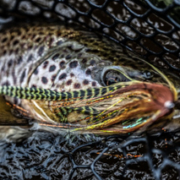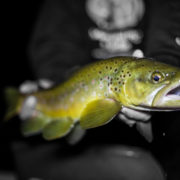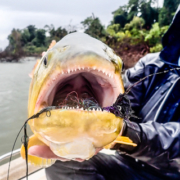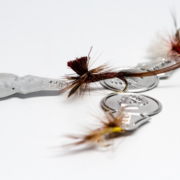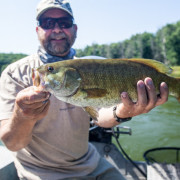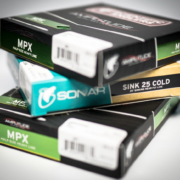Streamer Stripping Helpful Tips
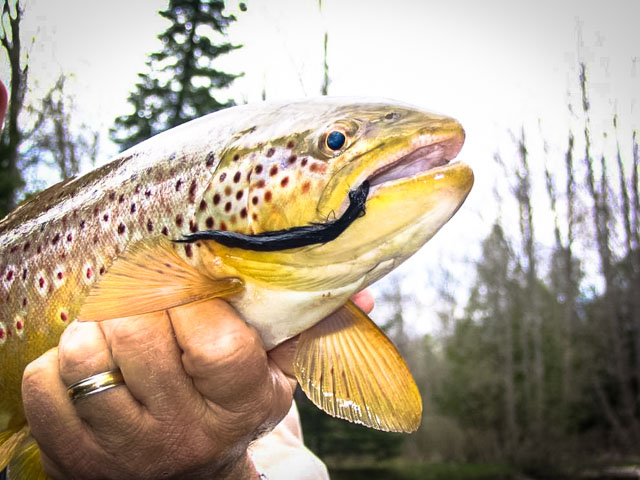
Stripping Streamers for Brown Trout
How many times have you heard the phrase “don’t stop moving your streamer”, when streamer fishing? It’s an interesting phrase and there is it a lot of truth to it for a lot of situations. However, there are always “exceptions to the rule” as multiple other scenarios might play out in your fly fishing career where you’re going to want to stop moving the fly to have success.
Spring streamer fishing season in Northern Michigan is just around the corner so let’s dive into some of the situations that might play out for you while stripping streamers on Michigan Rivers. Like most things in fly fishing, there’s always an exception to the rule. No matter how rare the exception, a fly fisherman should always be willing to experiment when traditional tactics aren’t producing.
Now let’s break down the “don’t stop moving your streamer” phrase based on species. To be a really good streamer fisherman you need to have a well rounded streamer game. Meaning you better be able to fish for multiple species, i.e you want to become the Bo Jackson of fly anglers. Trust me, having as many experiences as possible is going to make you a better angler even if the only thing you want to catch is Brown Trout.
Trout
Trout especially, Brown Trout, are prime targets to a streamer presentation. During the spring one of the most important factors to pay attention to is water temperature. For example, if water temps are still in the 30’s stopping your streamer pattern can be really effective. I’ve had some of my best streamer days on cold rainy days while barely moving the fly, almost vertically jigging the fly back to the boat. Keep in mind how water temps can affect trout behavior and then change your presentation to match the conditions. When jigging the fly it’s important to stay in contact with your presentation as the bites are usually soft. Make sure to maintain control of your slack line and keep your rod tip low when not moving the fly. Use flies like Russ Maddin’s Circus Peanut or a variety of conehead patterns that sink faster. I really like Tungsten cones in this situation as they sink really fast.
Another factor to keep in mind when stripping your streamer is the kill shot. Brown trout love to swirl or hit your fly on the constant-strip retrieve. Having the ability to stop after the swirl can lead to success . One our Hawkins Outfitters Guide, Jeff Topp likes to say;
If a trout misses the bait for sure pause it/stop the fly. If you see them swiping at it half heartedly trying to “kill it” and if they don’t bite it on the stop they will most likely eat it when the fly takes off again. Trout will bite on a steady retrieve but the twitch and pause seems to bring more bites for me.
As with most predators Brown Trout are keying in on the weak and helpless. in other words don’t be the fastest minnow in the group. Stopping your fly on occasion near structure or even in the middle of your retrieve can bring you surprising results. An example of this can be observed with how native baitfish move in their environment. Sculpins often tend to use a few quick bursts to propel themselves several feet and then they’ll quickly settle to the stream bottom and remain motionless. Fly anglers should keep this in mind when they’re fishing sculpin patterns. Don’t be afraid to stop your sculpin pattern!
King Salmon and Steelhead
If there are two species that the phrase “don’t stop” refers to best in Michigan waters it’s King Salmon and Steelhead. You need to keep the fly moving with these two migratory species. The two handed burn retrieve was implemented many years ago when chasing Kings on streamers is the number one retrieve to this day. King Salmon don’t like the pause when stripping streamers. This preference must come from chasing baitfish in Lake Michigan for so many years. These fish are just programmed to chase down a baitfish that doesn’t stop moving. Again just an educated guess, but stripping a fly with a two-handed retrieve definitely out fishes a single hand strip-pause retrieve.
While fishing in the spring you don’t have King Salmon present, but the same presentation will work well for Spring Steelhead on the stripped streamer. So this spring when chasing steelhead, try a smooth steady action with a sexy wiggle. That is the best way to describe the retrieve your looking for. I have a tendency when stripping for steelhead to throw more down stream, letting it swing first, then let the current grab the fly and strip it back to the boat. Rabbit strip patterns with flashabou work well for this type of retrieve. I am a big fan of the Little Rascal for that retrieve, especially on the Pere Marquette River. Try this pattern in white with some blue flashabou mixed in and hold on!
Smallmouth Bass
No predatory fish loves the paused or stopped fly more than a Smallmouth Bass! On many
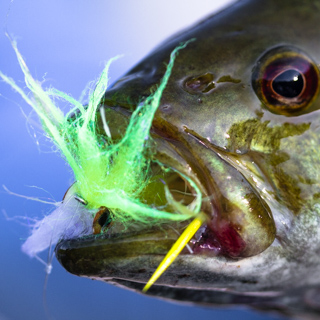
Smallmouth Bass Streamer Fishing
days of guiding and chasing Smallmouth Bass on the fly I see the suspended, slowly dying, barely moving fly, out fish the faster stripped fly. I like to think of Smallmouth Bass as lazy, but in reality they are actually really smart. Why chase the fast minnow when you can eat the dying ones? Get the same calories with less work!
Smallmouth Bass can now be targeted legally in the Spring and are suckers for a dying minnow presentation. Having the ability to mend your line up stream and let your fly float for a little while before stripping it works really well. This same technique which we learned fishing for smallmouth can now be utilized on the trout streams especially during the colder months when trout are less active for the most part. Having that arrow in your quiver can be a huge key to your success!
Stripping Streamers
While there are not any hard line established rules when in comes to stripping streamers, there are some general rules that we tend to follow for overall success. When the general rules fail to provide success sometimes you have to break the rules and think outside of the box. Having an understanding of what each predatory species is looking for will help you succeed in many ways, especially when we cross-train by fishing for multiple species. Learning how various predators set up to ambush prey and how they like their prey to behave under chase can give you an advantage in situations when the “Norm” isn’t working.
It is also important to remember the following guidelines for improved success; control all the variables that you can and remember fly selection, rigging, retrieve techniques, and location are all important considerations on any given day on the water. For additional information on how to set up your rig for streamer fishing please refer to this page.
If you want help improving your technique contact Cherie at 231-228-7135 and get a day booked with a Hawkins Outfitter Guide. We are all experts at this game.
Capt. Jon Ray

